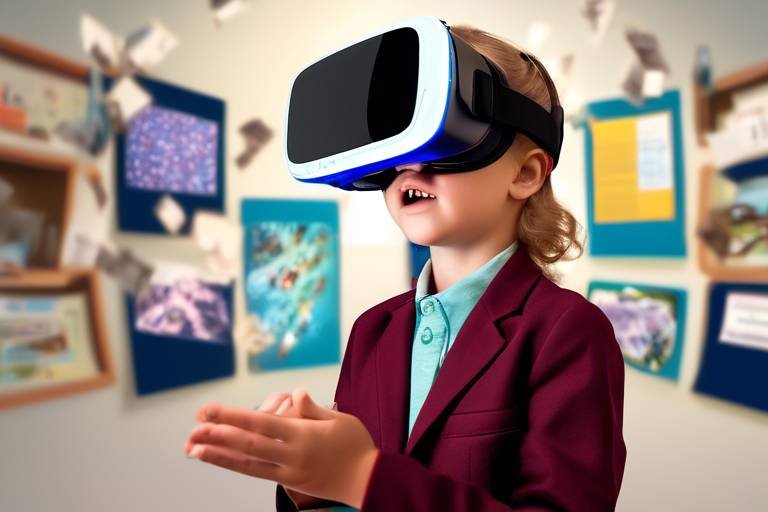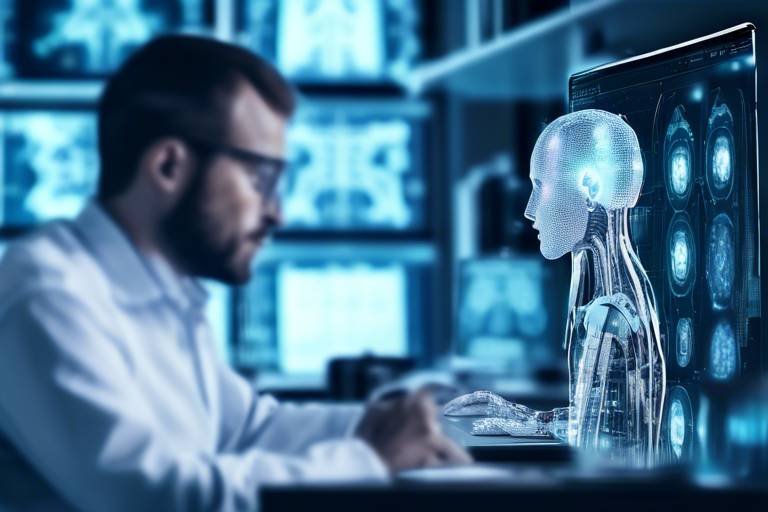The Role of Technology in Enhancing Public Health
In today’s fast-paced world, the intersection of technology and public health has never been more crucial. As we navigate through challenges like pandemics, chronic diseases, and health disparities, technology emerges as a powerful ally in enhancing public health initiatives. Imagine a world where healthcare is not just a service but an experience tailored to each individual's needs. This transformation is not a distant dream; it is happening right now. Through innovative solutions and data-driven approaches, technology is reshaping how we deliver healthcare, engage with patients, and ultimately, improve health outcomes.
From telemedicine and wearable health devices to artificial intelligence and big data analytics, the advancements in technology are creating a ripple effect across the healthcare landscape. These tools are not just enhancing accessibility; they are also fostering a culture of proactive health management. The integration of technology into public health strategies is akin to upgrading from a horse-drawn carriage to a high-speed train—it's faster, more efficient, and reaches more people. This article will delve into the various facets of how technology is enhancing public health, illustrating the profound impact it has on our lives.
As we explore these technologies, consider the implications they have not only on individual health but also on community well-being. For instance, telemedicine is bridging gaps in healthcare access, especially for those in remote areas. Wearable health devices empower individuals by providing real-time health metrics, promoting a proactive approach to health management. The utilization of data analytics in public health allows for a more informed decision-making process, enabling officials to respond swiftly to emerging health threats. In essence, technology is not just a tool; it is a catalyst for change in public health.
- How does telemedicine improve healthcare access? Telemedicine allows patients to consult healthcare providers remotely, reducing geographical barriers and increasing convenience.
- What are wearable health devices? These are electronic devices that monitor health metrics like heart rate, activity levels, and sleep patterns, providing users with real-time feedback.
- How is data analytics used in public health? Data analytics helps identify health trends, predict outbreaks, and inform policy decisions, leading to more effective public health strategies.
- What role does artificial intelligence play in diagnostics? AI enhances the accuracy and speed of disease identification, allowing for tailored treatment plans based on patient data.
- How does big data impact public health research? Big data analytics enables researchers to analyze large datasets, uncovering insights about health behaviors and the effectiveness of interventions.
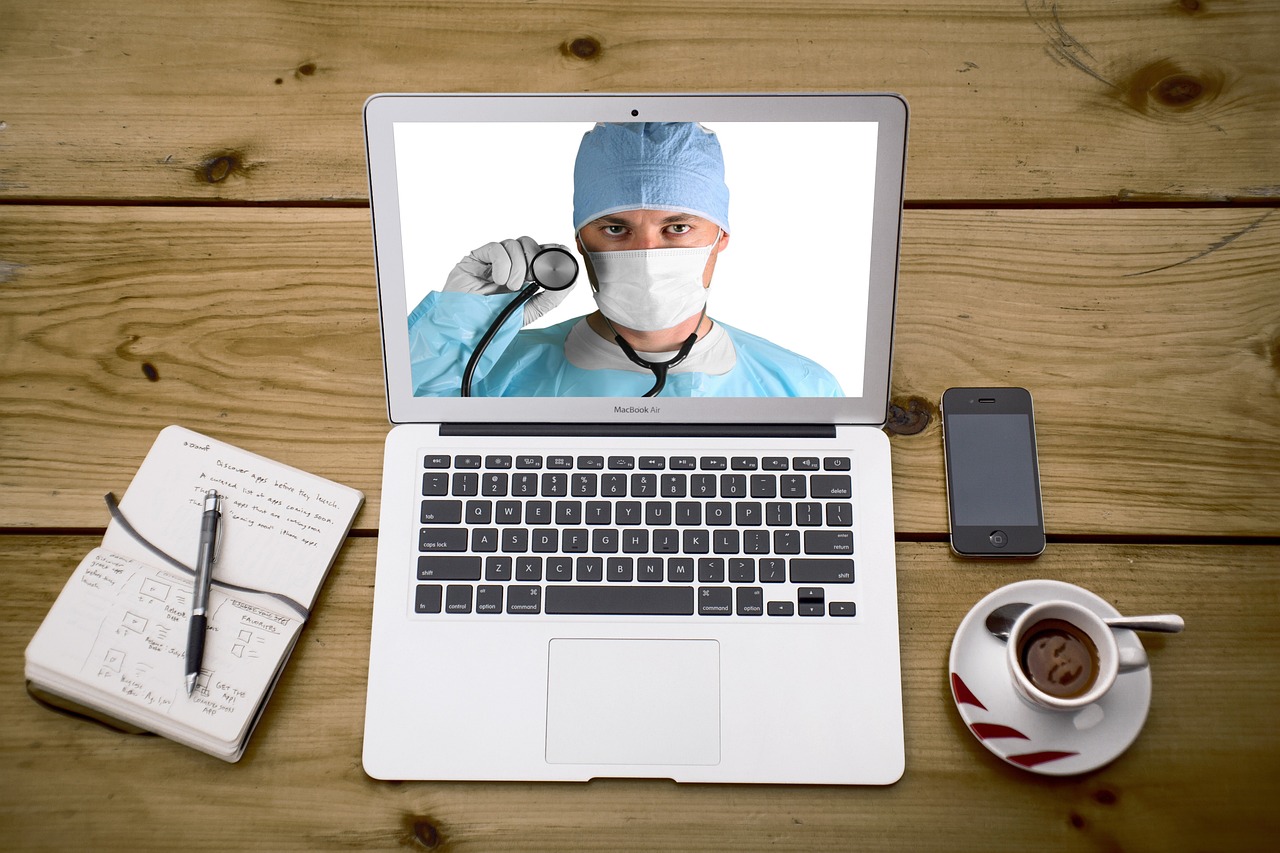
Telemedicine: Bridging the Gap
In recent years, telemedicine has emerged as a groundbreaking solution to the longstanding challenges of healthcare accessibility. Imagine being able to consult with your doctor without the hassle of traffic or long waiting times. Sounds like a dream, right? Well, that dream is now a reality for many patients around the globe. By leveraging technology, telemedicine allows individuals to connect with healthcare providers from the comfort of their homes, effectively breaking down geographical barriers and making healthcare more accessible than ever before.
One of the most significant advantages of telemedicine is its ability to enhance convenience. Patients can schedule appointments at their convenience, often with minimal wait times. This is especially beneficial for individuals living in rural or underserved areas, where access to healthcare facilities may be limited. In fact, studies have shown that telemedicine can reduce the time to receive care by up to 50%, which is a game-changer for those in urgent need of medical attention.
Moreover, telemedicine is not just about convenience; it also plays a crucial role in reducing healthcare costs. By minimizing the need for in-person visits, patients save on travel expenses and time off work. Healthcare systems also benefit from telemedicine as it allows for better resource allocation. With fewer patients crowding emergency rooms and clinics, healthcare providers can focus their efforts on those who truly need in-person care.
But how does telemedicine actually work? Here’s a brief overview of the process:
- Initial Consultation: Patients can use their smartphones, tablets, or computers to schedule a virtual appointment with a healthcare provider.
- Video Conference: During the appointment, patients engage in a video call, allowing doctors to assess symptoms and provide medical advice in real-time.
- Follow-Up Care: After the consultation, patients can receive prescriptions electronically and schedule follow-up appointments as necessary.
Telemedicine has proven particularly effective for managing chronic conditions, mental health issues, and follow-up care. For instance, patients with diabetes can easily monitor their blood sugar levels and share the data with their healthcare providers through secure platforms. This continuous monitoring leads to better management of their condition and ultimately improves their quality of life.
However, like any technology, telemedicine is not without its challenges. Issues such as privacy concerns, internet accessibility, and the need for digital literacy can pose barriers to some individuals. Yet, as technology continues to evolve, solutions to these challenges are being developed, making telemedicine an increasingly viable option for all.
As we look to the future, it’s clear that telemedicine is here to stay. It’s revolutionizing the way we think about healthcare delivery, making it more efficient, accessible, and patient-centered. So, if you haven’t yet explored the world of telemedicine, now might be the perfect time to take that leap!
- What types of services can I access through telemedicine? Telemedicine can be used for a variety of services, including routine check-ups, mental health consultations, and management of chronic conditions.
- Will my insurance cover telemedicine visits? Many insurance plans now cover telemedicine services, but it’s essential to check with your provider for specifics.
- Is telemedicine secure? Yes, reputable telemedicine platforms use encryption and secure connections to protect patient information.
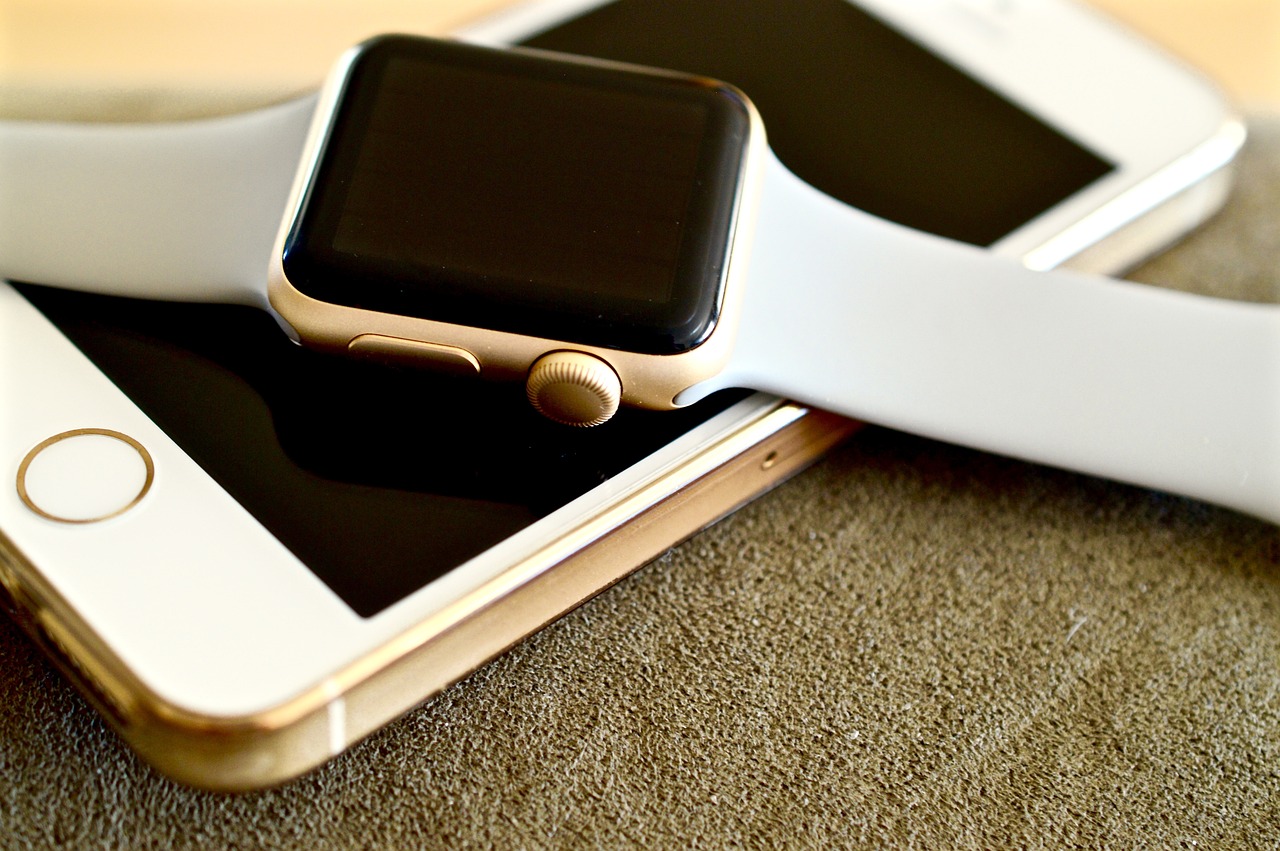
Wearable Health Devices
In today's fast-paced world, have emerged as game-changers in personal health management. Imagine having a personal health assistant right on your wrist! These devices, which include smartwatches, fitness trackers, and even smart clothing, empower individuals to take charge of their health like never before. They provide real-time feedback on various health metrics, allowing users to monitor their heart rate, activity levels, sleep patterns, and more, all at their fingertips.
One of the most exciting aspects of wearable health devices is their ability to promote proactive health management. Instead of waiting for a doctor's appointment to learn about your health status, you can receive continuous updates and insights. For instance, if your heart rate spikes during a workout, your device can alert you to slow down, reducing the risk of injury. This immediate feedback loop encourages healthier lifestyle choices, making it easier for users to stay active and engaged in their wellness journey.
Moreover, these devices can track a plethora of metrics, including:
- Heart Rate Monitoring: Helps users understand their cardiovascular health.
- Step Counting: Encourages daily movement and exercise.
- Sleep Tracking: Provides insights into sleep quality and duration.
- Calorie Tracking: Assists in weight management by monitoring caloric intake and expenditure.
But it doesn't stop there! Wearable health devices often come equipped with advanced features like GPS tracking for outdoor activities, stress monitoring, and even ECG capabilities. This comprehensive data collection enables users to make informed decisions about their health and fitness. For example, if you notice that your stress levels tend to spike during certain activities, you can adjust your routine to incorporate relaxation techniques, such as meditation or deep breathing exercises.
Furthermore, the integration of wearable devices with mobile health applications enhances the user experience. These applications can compile data collected from the devices, providing users with detailed reports and insights over time. This not only helps in tracking progress but also fosters a sense of accountability. Users can set goals, receive reminders, and even share their achievements with friends and family, creating a supportive community focused on health and wellness.
As we look to the future, the potential for wearable health devices is enormous. With advancements in technology, we can expect even more innovative features, such as improved accuracy in health measurements and enhanced connectivity with healthcare providers. Imagine a scenario where your wearable device can alert your doctor in real-time if it detects an anomaly in your health metrics, leading to timely interventions and improved health outcomes.
In conclusion, wearable health devices are not just a trend; they are a vital tool in the quest for better health. By providing real-time data, promoting proactive health management, and fostering engagement, these devices empower individuals to take charge of their health like never before. As technology continues to evolve, the impact of wearable devices on public health will only grow, paving the way for a healthier future for all.
1. What types of metrics can wearable health devices track?
Wearable health devices can track a variety of metrics, including heart rate, steps taken, calories burned, sleep quality, and even stress levels.
2. Can wearable health devices help with chronic disease management?
Yes, wearable devices can assist in chronic disease management by providing continuous monitoring and alerts, allowing for timely interventions.
3. Are wearable health devices accurate?
While wearable health devices are generally reliable, their accuracy can vary based on the type of device and the specific metric being measured. It's always best to consult with a healthcare provider for critical health assessments.
4. How do wearable devices connect to smartphones?
Most wearable devices connect to smartphones via Bluetooth, allowing users to sync data and access additional features through mobile health applications.

Data Analytics in Public Health
Data analytics is like the secret sauce in the kitchen of public health, transforming raw data into meaningful insights that can save lives. Imagine being able to predict a storm before it hits; that’s what data analytics does for health trends and disease outbreaks. By analyzing vast amounts of data, public health officials can identify patterns that might otherwise go unnoticed. This not only helps in understanding current health issues but also in anticipating future challenges.
One of the most significant benefits of data analytics is its ability to inform policy decisions. For instance, by analyzing data from various sources, health officials can determine which populations are at higher risk for certain diseases. This allows them to tailor interventions that address specific needs, ensuring that resources are allocated efficiently. Moreover, during a health crisis, such as an outbreak of a contagious disease, data analytics can provide real-time insights that enable quicker responses, potentially saving countless lives.
Consider the following key areas where data analytics is making a substantial impact in public health:
- Identifying Health Trends: By examining data over time, analysts can spot trends in disease prevalence, helping to allocate resources effectively.
- Predicting Outbreaks: Advanced algorithms can analyze historical data to predict when and where outbreaks are likely to occur.
- Informing Policy Decisions: Data-driven insights guide policymakers in creating effective health strategies and interventions.
Furthermore, the integration of data from various sources—such as hospitals, clinics, and even social media—enables a more comprehensive view of community health. This holistic approach allows for better understanding and management of health issues. For example, during the COVID-19 pandemic, data analytics was crucial in tracking infection rates, hospitalizations, and vaccination progress, ultimately guiding public health responses.
As we move forward, the role of data analytics in public health will only continue to grow. With advancements in technology and data collection methods, we can expect even more sophisticated tools that will enhance our ability to predict, prevent, and respond to health crises. The future of public health is undoubtedly data-driven, and those who harness its power will be at the forefront of improving health outcomes for all.
Q: What is data analytics in public health?
A: Data analytics in public health involves examining and interpreting health-related data to identify trends, predict outbreaks, and inform policy decisions.
Q: How does data analytics help in disease prevention?
A: By analyzing historical health data, public health officials can predict potential outbreaks and implement preventive measures before diseases spread.
Q: What types of data are used in public health analytics?
A: Various data types are utilized, including hospital records, demographic information, environmental data, and even social media activity.
Q: Can data analytics improve healthcare delivery?
A: Yes, by providing insights into patient needs and health trends, data analytics can enhance healthcare delivery and resource allocation.

Predictive Modeling for Disease Control
Predictive modeling has emerged as a cornerstone in the realm of public health, providing a powerful tool for forecasting disease patterns and trends. By leveraging historical data, healthcare professionals can create sophisticated models that simulate various scenarios, allowing them to anticipate outbreaks and allocate resources effectively. Imagine having a crystal ball that not only reveals potential health crises but also guides decision-making processes—this is precisely what predictive modeling achieves.
At its core, predictive modeling involves the use of statistical techniques and machine learning algorithms to analyze complex datasets. These models take into account numerous variables, including demographic information, environmental factors, and even social behaviors. For instance, a model might analyze past flu outbreak data alongside weather patterns and vaccination rates to predict where and when the next surge in cases might occur. This proactive approach is akin to weather forecasting; just as meteorologists predict storms to keep people safe, public health officials can use predictive models to prepare for potential health threats.
One of the remarkable aspects of predictive modeling is its ability to inform resource allocation. When health officials have accurate predictions about where an outbreak might strike, they can deploy vaccines, medical personnel, and other resources to those areas before the situation escalates. This not only enhances the efficiency of public health responses but also saves lives by ensuring timely interventions. For example, during the COVID-19 pandemic, predictive models played a crucial role in determining where to focus testing and vaccination efforts, ultimately contributing to better management of the crisis.
However, it’s essential to recognize that predictive modeling is not without its challenges. The accuracy of these models heavily relies on the quality and completeness of the data used. Incomplete or biased data can lead to misleading predictions, which may result in misallocation of resources. Therefore, ongoing efforts to improve data collection and integration across various health systems are vital for enhancing the reliability of predictive models.
In summary, predictive modeling for disease control is a transformative approach that empowers public health officials with the insights needed to tackle imminent health threats. By harnessing the power of data, these models enable proactive strategies that can significantly reduce the impact of diseases on communities. As technology continues to evolve, so too will the sophistication of predictive modeling, paving the way for a healthier future.
- What is predictive modeling in public health?
Predictive modeling in public health refers to the use of statistical algorithms and historical data to forecast disease outbreaks and health trends, allowing for proactive interventions. - How does predictive modeling help in disease control?
It helps by providing insights into potential future outbreaks, enabling health officials to allocate resources efficiently and implement timely interventions to mitigate risks. - What types of data are used in predictive modeling?
Predictive modeling utilizes various data types, including demographic information, historical health records, environmental factors, and social behavior data. - Are there limitations to predictive modeling?
Yes, limitations include the reliance on data quality, potential biases, and the complexity of accurately predicting human behavior in response to health interventions.

Real-time Surveillance Systems
In the realm of public health, are akin to a vigilant watchtower, continuously scanning the horizon for potential threats to community health. These systems collect and analyze health data as it emerges, allowing public health officials to respond swiftly to any signs of disease outbreaks or health crises. Imagine having the capability to detect an illness before it spreads like wildfire; that’s the power of real-time surveillance.
One of the most significant advantages of these systems is their ability to provide immediate insights into health trends within a community. By integrating data from various sources—such as hospitals, clinics, laboratories, and even social media—public health authorities can create a comprehensive picture of the health landscape. For instance, if a sudden spike in flu cases is detected in a specific area, health officials can mobilize resources, issue warnings, and implement preventive measures almost instantly. This proactive approach can significantly reduce the impact of outbreaks.
Real-time surveillance systems also play a crucial role in enhancing public health responses during emergencies. Whether it’s a natural disaster, an epidemic, or a bioterrorism threat, having access to real-time data allows for a more coordinated and effective response. For example, during the COVID-19 pandemic, many countries relied on real-time data to track infection rates, hospitalizations, and vaccination progress, which informed public policy and resource allocation.
Moreover, these systems are not just about reacting to crises; they also help in understanding long-term health trends. By analyzing data over time, health officials can identify patterns and risk factors that contribute to chronic diseases, leading to better prevention strategies. For instance, if data shows a correlation between air quality and respiratory illnesses, targeted interventions can be developed to address pollution sources.
To illustrate the impact of real-time surveillance systems, consider the following table that outlines key features and benefits:
| Feature | Benefit |
|---|---|
| Immediate Data Collection | Allows for rapid response to health threats. |
| Integration of Multiple Data Sources | Provides a comprehensive view of community health. |
| Longitudinal Data Analysis | Identifies trends and informs prevention strategies. |
| Emergency Response Coordination | Enhances effectiveness during public health emergencies. |
In conclusion, real-time surveillance systems are a cornerstone of modern public health strategy. They not only enhance our ability to respond to immediate health threats but also equip us with the knowledge needed to foster healthier communities in the long run. As technology continues to evolve, the potential for these systems to improve health outcomes becomes even more promising.
- What is a real-time surveillance system?
A real-time surveillance system is a tool used to continuously monitor health data, allowing for immediate detection and response to health threats. - How does real-time surveillance benefit public health?
It enables swift responses to outbreaks, helps identify health trends, and informs long-term health strategies. - What types of data are used in these systems?
Data can come from hospitals, laboratories, social media, and other health-related sources. - Can real-time surveillance systems predict future health issues?
Yes, by analyzing trends and patterns in health data, these systems can help forecast potential health crises.

Mobile Health Applications
In today's fast-paced world, —often referred to as mHealth apps—are becoming indispensable tools for both patients and healthcare providers. These applications are not just about convenience; they are transforming how we interact with our health. Imagine having a personal health assistant right in your pocket, ready to help you manage your well-being at any time. With just a few taps on your smartphone, you can access a wealth of health information, schedule appointments, and even receive reminders for medication. It's like having a mini clinic wherever you go!
One of the most compelling features of mobile health applications is their ability to enhance patient engagement. Users can track their health metrics, such as heart rate, sleep patterns, and physical activity levels, in real-time. This real-time monitoring empowers individuals to take charge of their health, making informed decisions based on the data collected. For instance, if you notice that your daily step count is decreasing, the app can prompt you to take action, perhaps suggesting a brisk walk or a workout session. This level of interactivity not only encourages healthier lifestyle choices but also fosters a sense of accountability.
Moreover, many mobile health applications integrate seamlessly with wearable devices, allowing for a comprehensive view of a user's health. Imagine wearing a smartwatch that tracks your heart rate and sleep, while the accompanying app provides insights and recommendations based on your data. This integration is revolutionizing how we approach health and wellness, making it easier than ever to stay informed and proactive.
Additionally, mobile health applications facilitate communication between patients and healthcare providers. Through secure messaging features, patients can ask questions, share concerns, and receive guidance without the need for an in-person visit. This not only saves time but also ensures that patients receive timely support, especially in situations where immediate attention is required. For instance, if you're feeling unwell, you can quickly consult your doctor through the app, potentially avoiding unnecessary trips to the clinic.
To illustrate the impact of mobile health applications, consider the following table that highlights some of the most popular features these apps offer:
| Feature | Description |
|---|---|
| Appointment Scheduling | Easily book and manage appointments with healthcare providers. |
| Medication Reminders | Receive notifications to take medications on time. |
| Health Tracking | Monitor metrics like weight, blood pressure, and fitness levels. |
| Telehealth Services | Consult with healthcare professionals via video calls. |
| Health Education | Access articles, videos, and tips to improve health literacy. |
In conclusion, mobile health applications are not just a trend; they are a vital part of modern healthcare. By empowering individuals to take control of their health, enhancing communication with providers, and offering a range of features that promote wellness, these apps are paving the way for a healthier future. As technology continues to evolve, we can expect even more innovative solutions that will further improve public health outcomes.
- What are mobile health applications? Mobile health applications are software programs designed to help users manage their health and wellness through their smartphones or tablets.
- How can mobile health apps improve my health? These apps can help you track health metrics, remind you about medications, facilitate communication with healthcare providers, and provide personalized health tips.
- Are mobile health applications secure? Most reputable mobile health applications use encryption and secure servers to protect user data, but it's important to review privacy policies before downloading.
- Can I use mobile health apps for telehealth services? Yes, many mobile health applications offer telehealth features that allow you to consult with healthcare providers remotely.

Artificial Intelligence in Diagnostics
Artificial Intelligence (AI) is not just a buzzword; it's a game-changer in the world of diagnostics. Imagine walking into a doctor's office where a system can analyze your symptoms and medical history faster than any human can. That’s the power of AI! By leveraging advanced algorithms and machine learning, AI enhances the accuracy and speed of disease identification. This means that healthcare professionals can make well-informed decisions and tailor treatment plans much more effectively. But how does it really work?
AI systems are trained on vast datasets, learning from millions of medical records, imaging studies, and laboratory results. This training enables them to recognize patterns that might be missed by the human eye. For instance, in radiology, AI can assist in interpreting X-rays and MRIs, identifying abnormalities such as tumors or fractures with remarkable precision. The integration of AI in diagnostics not only elevates the standard of care but also reduces the time patients spend waiting for results.
Furthermore, AI-driven diagnostics can enhance the patient experience significantly. With tools that can provide immediate feedback and recommendations, patients are more engaged in their healthcare journey. They receive personalized insights based on their unique health data, which promotes a proactive approach to health management. This shift from reactive to proactive care is crucial in preventing diseases before they escalate.
To illustrate the impact of AI in diagnostics, consider the following table that summarizes key benefits:
| Benefit | Description |
|---|---|
| Increased Accuracy | AI systems reduce human error by providing data-driven insights. |
| Speed of Diagnosis | AI can analyze data in seconds, providing quicker results to patients. |
| Personalized Treatment | AI tailors treatment plans based on individual patient data. |
| Cost Efficiency | Reduces unnecessary tests and procedures, saving time and resources. |
In addition to these benefits, AI also plays a pivotal role in predictive analytics. By analyzing historical data, AI can identify trends and potential outbreaks before they occur. This capability is invaluable for public health officials who need to allocate resources effectively and implement timely interventions. It’s like having a crystal ball that helps predict the future of health trends!
However, while the advantages of AI in diagnostics are clear, there are also challenges to consider. Data privacy and security remain paramount, as sensitive health information is processed and analyzed. Ensuring that AI systems are transparent and accountable is essential for building trust among patients and healthcare providers alike.
In conclusion, the integration of Artificial Intelligence in diagnostics is revolutionizing how we approach healthcare. With its ability to enhance accuracy, speed, and personalization, AI is paving the way for a future where healthcare is not just reactive but proactive. As we continue to embrace these technological advancements, the potential for improved health outcomes is limitless.
- What is Artificial Intelligence in diagnostics? - AI in diagnostics refers to the use of machine learning algorithms and data analysis to improve the accuracy and speed of disease identification.
- How does AI improve patient care? - AI enhances patient care by providing quicker diagnoses, personalized treatment plans, and engaging patients in their health management.
- Are there any risks associated with AI in healthcare? - Yes, data privacy and security are significant concerns, and ensuring the transparency of AI systems is vital for maintaining trust.

Machine Learning for Disease Prediction
Imagine a world where predicting disease outbreaks is as easy as checking the weather forecast. Machine learning is making this vision a reality. By utilizing advanced algorithms and vast datasets, machine learning can analyze complex patterns in health data that would be nearly impossible for humans to decipher alone. This technology is not just a passing trend; it's a game-changer in public health.
At its core, machine learning involves training a computer model on historical data, allowing it to identify correlations and predict future outcomes. For example, researchers can input data on past flu outbreaks, including variables like temperature, humidity, and population density. The machine learning model then learns from this data, enabling it to predict when and where the next outbreak might occur. This predictive capability is crucial, as it allows public health officials to prepare and allocate resources effectively, potentially saving countless lives.
One of the most exciting aspects of machine learning in disease prediction is its ability to continuously improve. As more data becomes available, these models can refine their predictions, increasing accuracy over time. This is particularly valuable in the context of emerging infectious diseases, where early detection can be the difference between a localized outbreak and a widespread epidemic.
Moreover, machine learning can help identify at-risk populations by analyzing demographic and health-related data. For instance, by examining patterns in health records, machine learning can pinpoint communities that are more susceptible to certain diseases, allowing for targeted interventions. This proactive approach not only enhances public health responses but also promotes the efficient use of resources.
Let's take a look at a table that summarizes the key benefits of machine learning in disease prediction:
| Benefit | Description |
|---|---|
| Early Detection | Machine learning can predict disease outbreaks before they occur, allowing for timely interventions. |
| Resource Optimization | By identifying at-risk populations, resources can be allocated more effectively. |
| Continuous Improvement | Models refine their predictions as more data becomes available, increasing accuracy over time. |
| Personalized Health Strategies | Machine learning can help tailor public health strategies to specific communities based on their unique health profiles. |
In conclusion, the integration of machine learning into disease prediction represents a monumental leap forward in public health. As we continue to harness the power of technology, we can look forward to a future where health outcomes improve significantly, and communities are better prepared to face health challenges. The collaboration between data scientists and public health officials will be critical in ensuring that these innovative solutions are implemented effectively.
- What is machine learning? Machine learning is a subset of artificial intelligence that enables computers to learn from data and improve their predictions over time without being explicitly programmed.
- How does machine learning help in disease prediction? By analyzing historical health data, machine learning algorithms can identify patterns and predict future disease outbreaks, helping public health officials respond proactively.
- Can machine learning improve public health outcomes? Yes, by enabling early detection, optimizing resource allocation, and personalizing health strategies, machine learning has the potential to significantly enhance public health outcomes.

AI-driven Personalized Medicine
In the ever-evolving landscape of healthcare, is emerging as a game-changer. Imagine a world where treatments are not just one-size-fits-all but are tailored specifically to you. That's the promise of personalized medicine, and artificial intelligence is at the heart of this transformation. By utilizing advanced algorithms and vast amounts of data, AI can analyze your unique genetic makeup, lifestyle choices, and even environmental factors to recommend the most effective treatment options.
This approach not only enhances treatment efficacy but also minimizes the risk of adverse effects. For instance, consider the way traditional treatments often lead to trial-and-error scenarios, where patients might endure multiple therapies before finding the right one. With AI, healthcare professionals can make informed decisions quickly, leading to faster recovery times and improved patient satisfaction.
The integration of AI in personalized medicine involves several key components:
- Genomic Sequencing: AI analyzes genomic data to identify mutations and variations that may influence disease progression and treatment response.
- Health History Evaluation: By examining a patient's medical history, AI can predict how they may respond to certain medications.
- Real-time Monitoring: AI-powered tools can continuously track a patient's health metrics, allowing for timely adjustments to treatment plans.
The implications of AI-driven personalized medicine extend beyond individual patients. On a broader scale, it can help in the development of targeted therapies that address specific populations, leading to more effective public health strategies. For example, if a certain genetic marker is prevalent in a community, AI can help design interventions that specifically target that group, ultimately improving health outcomes at a population level.
As we delve deeper into this exciting frontier, ethical considerations also come into play. Questions about data privacy, consent, and the potential for bias in AI algorithms must be addressed to ensure that the benefits of personalized medicine are accessible to everyone. The future of healthcare is not just about treating diseases; it’s about understanding the individual behind the diagnosis. With AI-driven personalized medicine, we are one step closer to achieving that goal.
- What is AI-driven personalized medicine? AI-driven personalized medicine refers to the use of artificial intelligence to tailor medical treatments to individual patients based on their unique genetic and health profiles.
- How does AI improve treatment outcomes? AI analyzes vast datasets to identify the most effective treatments for individuals, reducing the trial-and-error approach often seen in traditional medicine.
- Are there any risks associated with AI in healthcare? Yes, there are potential risks including data privacy concerns and the possibility of bias in AI algorithms, which must be carefully managed.
- Can personalized medicine benefit public health? Absolutely! By targeting specific populations based on genetic markers, public health strategies can be more effective and efficient.

Big Data in Public Health Research
Big data analytics is reshaping public health research in ways that were once unimaginable. With the ability to analyze vast datasets, researchers can uncover vital insights about health behaviors, risk factors, and the effectiveness of various interventions. This transformation is akin to having a superpower; it allows public health officials to see patterns and trends that would otherwise remain hidden in smaller datasets. Imagine trying to find a needle in a haystack, but with big data, that needle suddenly becomes much more visible.
One of the most significant advantages of big data in public health research is its capacity to improve decision-making. By leveraging data from various sources, including electronic health records, social media, and even environmental data, researchers can create a comprehensive picture of community health. This holistic approach enables targeted interventions that address specific health challenges, ultimately leading to improved health outcomes.
For instance, consider the following applications of big data in public health:
- Identifying Health Trends: By analyzing data over time, researchers can spot emerging health trends, such as rising obesity rates or increasing prevalence of mental health issues.
- Evaluating Intervention Effectiveness: Big data allows for the assessment of public health campaigns, helping to determine which strategies are most effective in promoting healthier behaviors.
- Resource Allocation: With insights gained from data analysis, public health officials can allocate resources more efficiently, ensuring that interventions are directed where they are most needed.
Moreover, big data analytics facilitates collaboration among various stakeholders in the healthcare sector. By sharing data across organizations, researchers can gain access to a broader range of information, which enhances the overall quality of public health research. This collaboration can lead to innovative solutions that tackle complex health issues, such as infectious disease outbreaks or chronic health conditions.
To give you a clearer picture, let’s look at a table that summarizes the impact of big data on public health research:
| Impact Area | Description |
|---|---|
| Health Trend Identification | Spotting emerging health issues through data analysis. |
| Intervention Evaluation | Assessing the effectiveness of public health campaigns. |
| Resource Allocation | Directing resources to areas of greatest need. |
| Collaboration | Enhancing research quality through data sharing. |
In conclusion, the integration of big data into public health research is not just a trend; it’s a fundamental shift that empowers public health officials and researchers alike. By harnessing the power of big data, we can make informed decisions that lead to healthier communities and improved health outcomes for all.
- What is big data in public health?
Big data in public health refers to the large volumes of health-related data that can be analyzed to uncover patterns, trends, and insights that inform public health decisions. - How does big data improve health outcomes?
By providing comprehensive insights into health behaviors and risk factors, big data enables targeted interventions and efficient resource allocation, ultimately improving health outcomes. - What are some examples of big data sources?
Examples include electronic health records, social media data, environmental data, and health surveys.
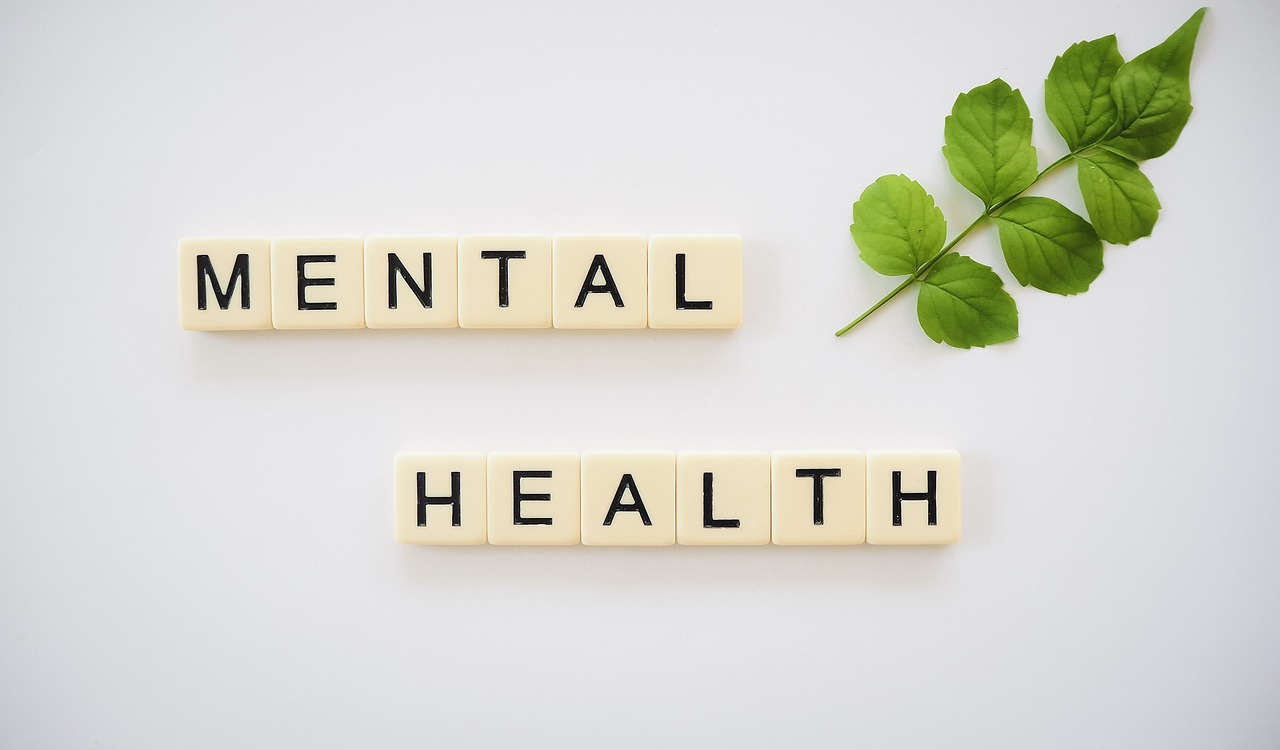
Population Health Management
Population health management is a transformative approach in public health that leverages big data to better understand and address the health needs of communities. By analyzing extensive datasets, public health officials can identify specific health challenges faced by different populations and tailor interventions accordingly. This proactive strategy not only improves health outcomes but also ensures that resources are allocated efficiently. Imagine trying to solve a puzzle; without all the pieces, you can’t see the full picture. Similarly, population health management provides the complete picture of community health, allowing for targeted solutions.
The core of population health management lies in its ability to assess the health status of specific groups. By examining factors such as age, gender, socioeconomic status, and pre-existing conditions, healthcare providers can develop a nuanced understanding of the population they serve. For instance, a community with a high prevalence of diabetes might benefit from educational programs focused on nutrition and exercise. This data-driven approach not only enhances the effectiveness of health interventions but also fosters a sense of community involvement, as residents become active participants in improving their own health.
Moreover, population health management facilitates the implementation of preventive measures. By identifying at-risk populations, healthcare systems can initiate programs that encourage early screening and lifestyle modifications. This is akin to a gardener tending to plants before they wilt; early intervention can prevent more severe health issues from developing. For example, if data reveals that a particular demographic is prone to heart disease, healthcare providers can offer tailored wellness programs that focus on heart health, ultimately reducing the incidence of this condition.
One of the most significant advantages of population health management is its emphasis on collaboration among various stakeholders. Healthcare providers, public health officials, community organizations, and even patients themselves must work together to create a comprehensive health strategy. This collaboration can take many forms, including:
- Shared data platforms that allow for real-time health monitoring.
- Community outreach programs that engage residents in health initiatives.
- Partnerships with local businesses to promote health and wellness.
In conclusion, population health management is not just about collecting data; it’s about using that data to foster healthier communities. As we continue to embrace technology in healthcare, the potential for improving public health outcomes becomes even more significant. The future of healthcare is not just in treating diseases but in preventing them, and population health management is at the forefront of this revolutionary shift.
- What is population health management? Population health management is a strategy that uses data analysis to understand and improve the health outcomes of specific populations.
- How does big data contribute to population health management? Big data provides insights into health trends and risk factors, allowing for targeted interventions that address specific health challenges.
- Why is collaboration important in population health management? Collaboration among healthcare providers, public health officials, and community organizations enhances the effectiveness of health interventions and fosters community involvement.
- Can population health management reduce healthcare costs? Yes, by focusing on prevention and early intervention, population health management can help reduce the need for more expensive treatments down the line.

Health Information Exchange
In today's fast-paced world, the Health Information Exchange (HIE) has emerged as a cornerstone of modern healthcare. Imagine a scenario where your healthcare providers can seamlessly share your medical history, test results, and treatment plans with one another, regardless of where you seek treatment. This is precisely what HIE enables—an interconnected web of health data that enhances patient care and safety. By facilitating the sharing of patient information, HIE eliminates the silos that often exist between different healthcare systems, ensuring that every provider has access to the most up-to-date information.
The benefits of HIE are profound. For starters, it drastically reduces the chances of duplicative testing. When healthcare providers have access to your complete medical history, they can make informed decisions without repeating tests you've already undergone. This not only saves time but also cuts down on healthcare costs. Furthermore, HIE enhances care coordination, allowing different specialists involved in your treatment to collaborate effectively. Imagine being treated by multiple doctors for various conditions; HIE ensures they are all on the same page, working together towards your best health.
Additionally, HIE plays a crucial role in improving patient safety. With real-time access to patient data, healthcare providers can quickly identify potential drug interactions, allergies, and other critical health information that could affect treatment decisions. This proactive approach to patient care can prevent medical errors and ensure that you receive the safest and most effective treatment possible.
However, the implementation of HIE is not without its challenges. Issues such as data privacy, security concerns, and standardization of data formats pose significant hurdles. It’s essential for healthcare organizations to adopt robust security measures to protect sensitive patient information while complying with regulations like HIPAA (Health Insurance Portability and Accountability Act).
In summary, Health Information Exchange is revolutionizing the healthcare landscape by promoting better communication, enhancing patient safety, and improving overall health outcomes. As technology continues to evolve, the future of HIE looks promising, with the potential for even greater integration and efficiency in the healthcare system.
- What is Health Information Exchange (HIE)?
HIE refers to the electronic sharing of health-related information among organizations to improve the quality and safety of patient care. - How does HIE benefit patients?
HIE allows for better care coordination, reduces duplicate tests, and enhances patient safety by providing healthcare providers with immediate access to a patient's medical history. - What are the challenges of implementing HIE?
Challenges include ensuring data privacy and security, standardizing data formats, and overcoming resistance to change from healthcare providers.
Frequently Asked Questions
-
What is telemedicine and how does it improve public health?
Telemedicine is a game-changer in healthcare! It allows patients to consult with healthcare providers from the comfort of their homes. This innovation breaks down barriers like distance and mobility, making it easier for people to access timely medical attention. Imagine being able to see your doctor without the hassle of traveling or waiting in long lines!
-
How do wearable health devices contribute to personal health management?
Wearable health devices are like having a personal health coach on your wrist! They empower individuals to monitor their health metrics in real-time, such as heart rate, steps taken, and sleep patterns. By tracking this data, users can make informed decisions about their health and adopt healthier lifestyle choices. It's all about being proactive rather than reactive!
-
What role does data analytics play in public health?
Data analytics is the backbone of modern public health strategies. It helps identify health trends, predict outbreaks, and inform policy decisions. By analyzing vast amounts of data, public health officials can implement more effective interventions and allocate resources where they're needed most. Think of it as having a crystal ball that reveals the health needs of a community!
-
Can you explain predictive modeling and its significance?
Predictive modeling is like having a weather forecast for diseases! It uses historical data to forecast disease patterns, allowing public health officials to prepare and respond effectively. By anticipating outbreaks, resources can be allocated efficiently, ensuring timely interventions that can save lives and prevent the spread of illness.
-
How do mobile health applications enhance patient engagement?
Mobile health applications are revolutionizing how patients interact with their healthcare! These apps provide easy access to medical records, appointment scheduling, and personalized health tips. By empowering users with information and tools, they encourage active participation in their health journey, making healthcare feel more personal and accessible.
-
What impact does artificial intelligence have on diagnostics?
Artificial intelligence is transforming diagnostics by making it faster and more accurate! AI algorithms analyze medical data to identify diseases quickly, which helps healthcare professionals make informed decisions. This technology is like having a super-smart assistant that enhances the quality of care and tailors treatment plans to individual patients.
-
How is big data reshaping public health research?
Big data is the new frontier in public health research! It allows researchers to analyze large datasets to uncover insights about health behaviors and risk factors. This information is crucial for developing targeted interventions that address specific health challenges. It’s like having a treasure trove of information that can lead to better health outcomes for entire populations!
-
What is health information exchange and why is it important?
Health information exchange is all about sharing patient data among healthcare providers. This seamless exchange enhances care coordination, reduces duplication of services, and improves patient safety. Imagine a world where your doctor has all your health information at their fingertips, leading to informed decision-making and better overall care!













